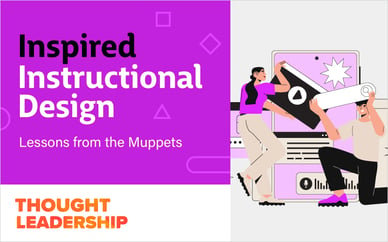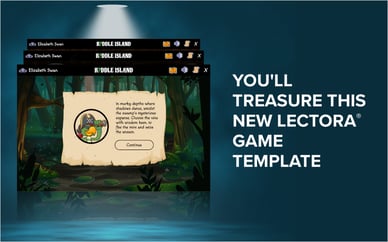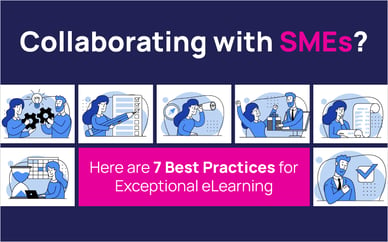Getting beyond the basics of knowledge acquisition and into application, analysis, synthesis, and evaluation with self-paced online learning requires some imaginative engineering and execution that pushes boundaries and challenges conventional thinking. Luckily, we know just the people who can help you do that.
In this webinar, Richard Vass shared some examples of client work that eLearning Brothers custom team created to achieve the higher levels of Bloom’s Taxonomy: Apply, Analyze, Evaluate, and Create.
So, how do you reach the higher levels of Bloom’s Taxonomy?
It’s all in the design!
Apply
For the Apply level of Bloom’s Taxonomy, Rich shared an example of a course we built for Adobe to showcase the Captivate 9 release in 2015. The goal of the course was to showcase the new branching elements and other exciting new features.
This level of Bloom’s is about showing you can apply information in new situations. Your learning goals might include action verbs like:
- Execute
- Implement
- Solve
- Use
- Demonstrate
- Interpret
- Operate
- Schedule
- Sketch
As you can see, after being presented with some information, learners taking the sample course were asked to apply that information in a knowledge check:
Analyze
This level of Bloom’s is about drawing connections among ideas. Your learning goals might include action verbs like:
- Differentiate
- Organize
- Relate
- Compare
- Contrast
- Distinguish
- Examine
- Experiment
- Question
- Test
For the Analyze level, Rich showed a project our custom team created for PayPal. For this course, PayPal really wanted the content to be deeply immersive and highly engaging. We created an animation of a rube goldberg machine where each decision a manager made moved the ball (or didn’t move the ball).
Managers had to analyze a series of different proposals and decide what action to take. If they made the wrong choices, the ball in the rube goldberg machine would get stuck. If they made the right choices, the ball went all the way through the machine and animated fireworks appeared on the screen.
Evaluate
This level of Bloom’s is about justifying a decision or stance. Your learning goals might include action verbs like:
- Appraise
- Argue
- Defend
- Judge
- Select
- Support
- Value
- Critique
- Weigh
In this example created for a financial company, the learner had to examine conversations happening between people in various life stages. Then, the learner had figure out where on a generational timeline the characters belonged.
Create
This level of Bloom’s is about being able to produce new or original work. Your learning goals might include action verbs like:
- Design
- Assemble
- Construct
- Conjecture
- Develop
- Formulate
- Author
- Investigate
This is one of the toughest levels to achieve with self-paced, online learning. In the example Rich shared, the learner had to type into boxes to craft their own S.M.A.R.T. goals, based on what they had learned previously in the course.
Watch the recording to see the example courses in greater detail.
Remember, you don’t always have to get to the top of Bloom’s Taxonomy. Sometimes your course’s subject matter won’t warrant those higher levels. But it sure is more fun to develop for the higher levels of Bloom’s!
If you have a training need that requires those higher levels, and you want us to help you get there, give us a ring (or an email ding).








